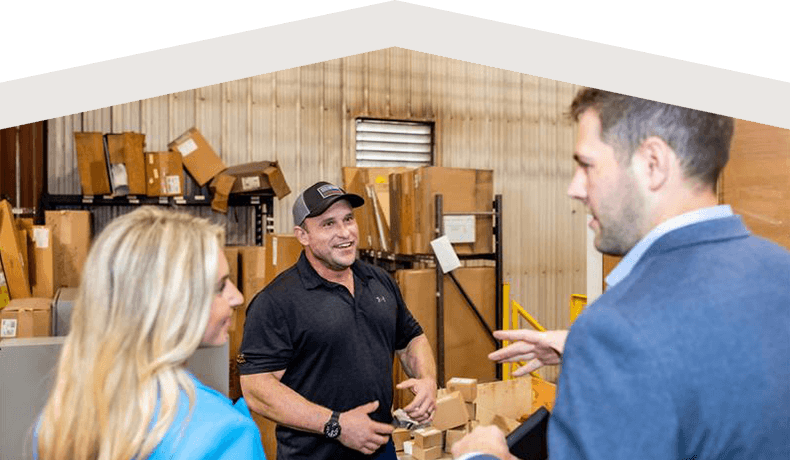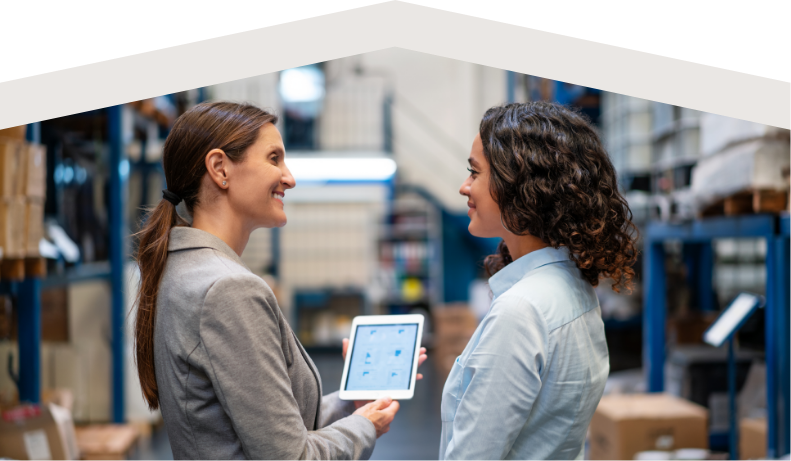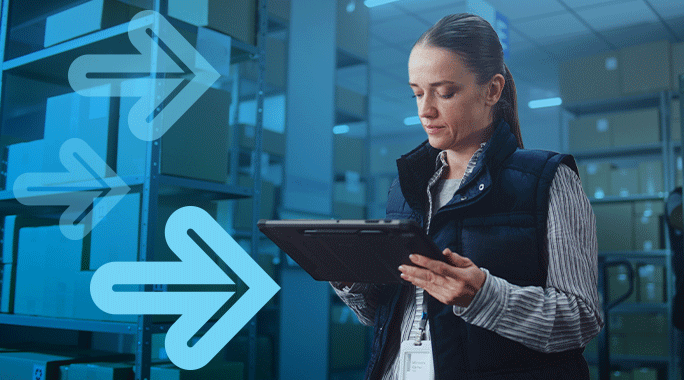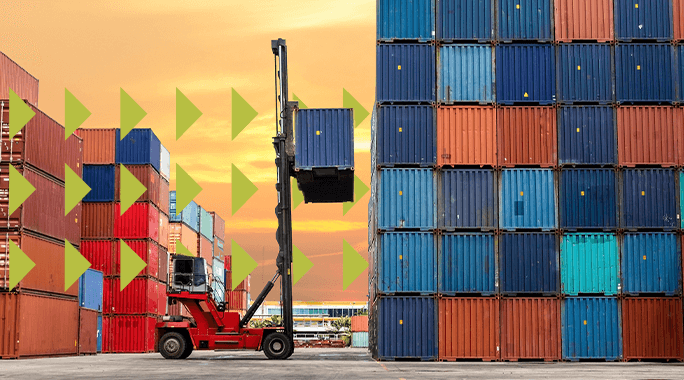BLOG POST
What is Reverse Logistics?
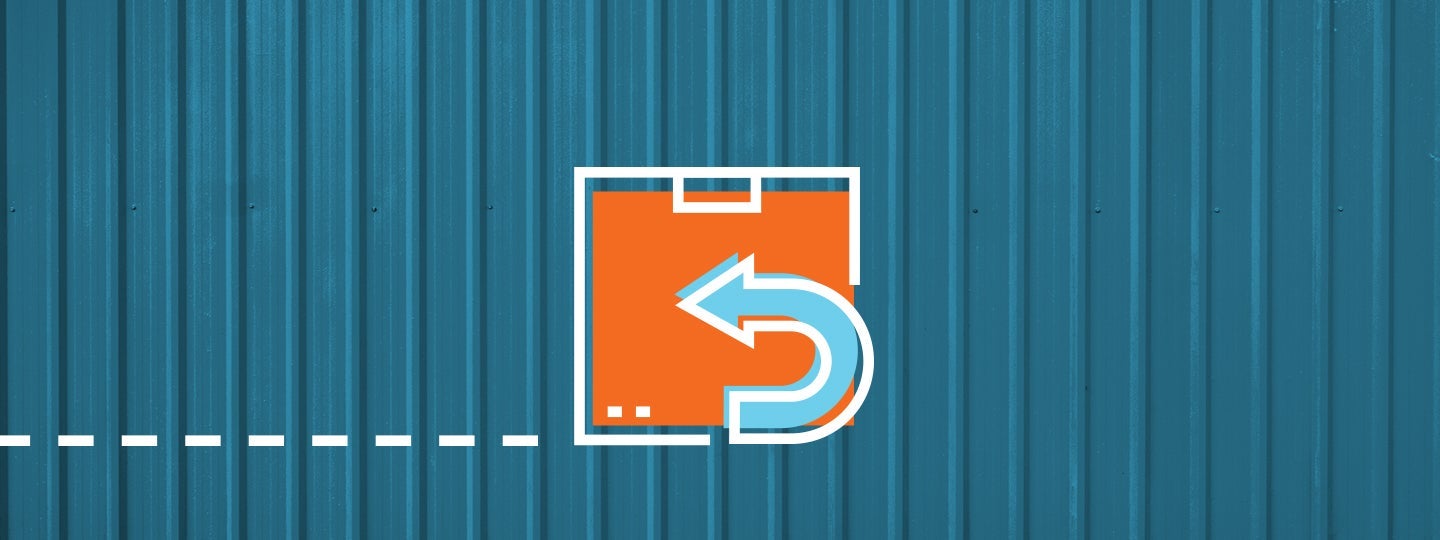
Reading Time: 4 minutes
Retail product returns account for an estimated $183 billion in loss a year.1 Through reverse logistics, companies can regain some of the value of the returned product, its parts and materials by reintroducing them into the market or selling its recyclable parts. The challenge is the process needs to be done quickly to mitigate any further loss of value.
Most businesses can take advantage of reverse logistics process, but it's most common in these industries:
- Appliances
- Apparel
- Automotive
- Consumer electronics
- Medical and pharmaceutical
- Retail
How does reverse logistics work?
The theory behind reverse logistics is that a product has value at every phase of its lifecycle, albeit at different amounts depending on the phase. Traditionally, companies consider a product's value to begin at its inception (in the factory, for instance) and ends with its sale (to the consumer). What they don't consider is the value it still holds after it's been sold.
Reverse logistics is commonly defined by five Rs each step can be on its own or overlap with others:
- Returns
- Recall
- Repair and refurbish
- Remanufacture and reuse
- Recycle
As you can see, the process starts with the product making its way back from the consumer via small package shipping or freight. While a product return is often the first step, a manufacturer- or government-issued recall can also initiate the process. These next sections will show how each of the Rs in reverse logistics can work for some industries.
Reverse Logistics Industry Examples
Return shipping
When a customer returns an item, it is shipped to a distribution center where it can be quickly assessed as to where it is in its lifecycle. Based on the assessment, it's sent from the center to the proper location whether it's a redistributor, a manufacturer, a recycling center, a charity or (if it has reached the end of its lifecycle) to the landfill. Timeliness is essential, especially if the item is to be resold or reused.
Product recalls
Recalls can happen in any industry, but they're most prominent in the automotive, consumer electronics, food and medicine industries. Consumer protection laws require the manufacturers and suppliers to cover the costs associated with a recall, including product replacement.
Having an efficient process in place for recalled items can create a good customer experience and potentially salvage a wavering relationship. While recalls can have devastating effects on your bottom line, all is not lost. Toxic and hazardous products must be destroyed, but not all products are destined for destruction. Depending on the severity of the problem and its circumstances, you might gain some value from the defective product by repairing, salvaging or reselling the unaffected parts of the product.
Resell returned items
Items returned by a dissatisfied customer can go one of several ways: items in new or perfect condition can be repackaged and resold to another consumer or a redistributor. If it was returned because of a minor defect or imperfection, it can be sent for repair and sold as a refurbished item. This is common for consumer electronics and automotive parts.
Repair and refurbish items
The challenge of reselling a repaired or refurbished item to regain the maximum percent of the original price is the time it takes for the process. When a returned item is sent back to the manufacturer, it goes through a series of inspections to determine if it's resalable as is or it needs to be repaired. That could mean dismantling most or all the parts, repairing what's defective and reassembling it for resale. This must all be done quickly to avoid diminishing the product's value, either because it's seasonal, outdated or expired.
Remanufacture and reuse the raw materials
In this part of reverse logistics, the discarded item is sent back to the manufacturer who reuses the raw materials in newly manufactured products. This helps the company reduce waste and save on manufacturing costs by using recyclable materials instead of having to create or use new parts.
Recycle products that cannot be reused
Products that cannot be reused or refurbished can be sold for recycling into other materials for reuse. Any other parts that have reached the end of their lifecycle i.e., they cannot be resold, reused, remanufactured or repaired are properly and safely disposed.
Reverse logistics in action
These additional examples show how reverse logistics can help offset the cost of customer returns and the depreciation of a product's value.
- Product and equipment repair and refurbish. This sector mostly applies to consumer electronics, the automotive industry and retail. Products that are slightly defective can often be returned to the manufacturer for repair and resold as a refurbished product.
- Resale of unsold and returned goods. Rather than discard or destroy unsold products or leave them sitting in a warehouse, products in excellent condition can be sold to a redistributor or donated to charity. If they've already been written off as a loss, you'll earn a 100% profit on resold merchandise or earn contribution tax credits.
- Recycled parts. Parts that still have useful life in them can be reused by manufacturers to save on the cost of using new parts.
- Recall and destruction of outdated products. Unsold pharmaceuticals must be safely destroyed per local, state and federal environmental regulations once the expiration date is reached. Healthcare facilities may return unused, unsaleable prescription medicines the manufacturer for credit.
- Rental and lease returns. When customers return rentals and leased equipment, the items are inspected to verify if they're operational or in need of repair before they can be reused or resold. Products that have reached the end of their life are recycled.
How reverse logistics fits into your shipping process
For reverse logistics to be effective, companies must have an efficient process in place. As a third-party logistics provider, Worldwide Express has the insights and expertise to help you identify small package or freight solutions and efficiencies for your entire supply chain - both the outbound and reverse operations. From small packages to less-than-truckload and even full truckload cargo, we have a leading carrier network that can service your needs no matter your industry. Get started with a custom consultation today.
1 Hudson, Matthew, "The High Cost of Retail Returns." June 25, 2019. The Balance.

